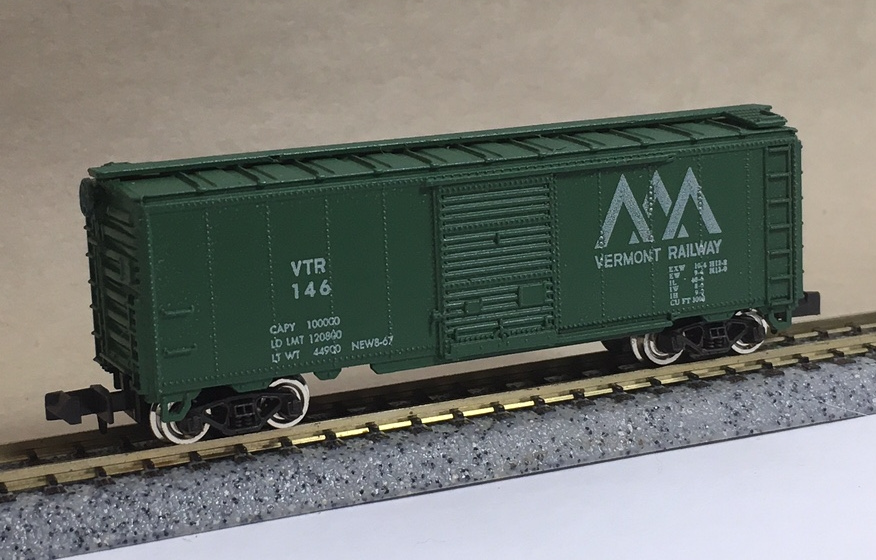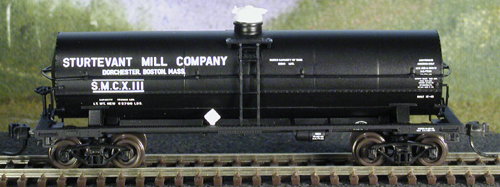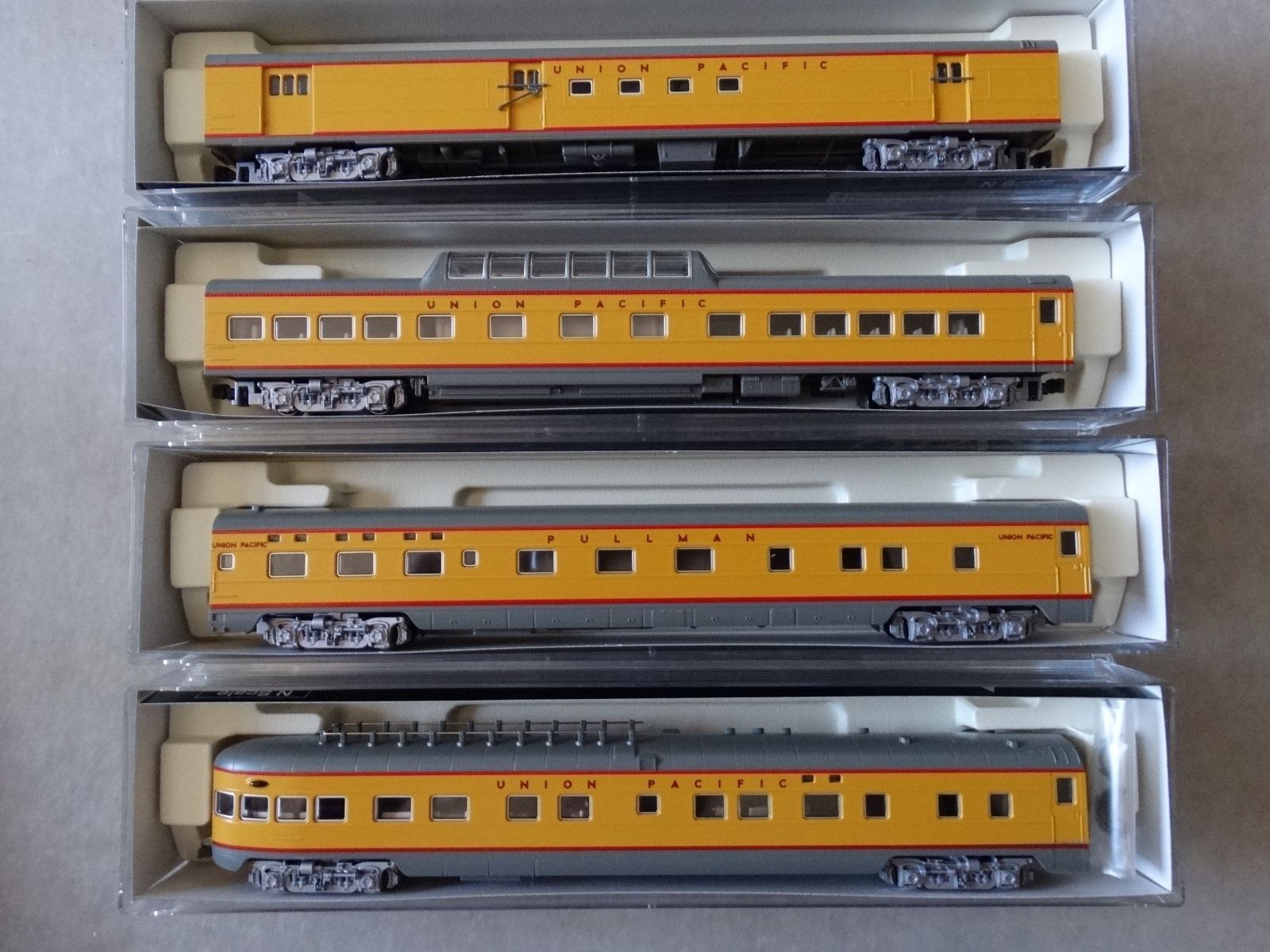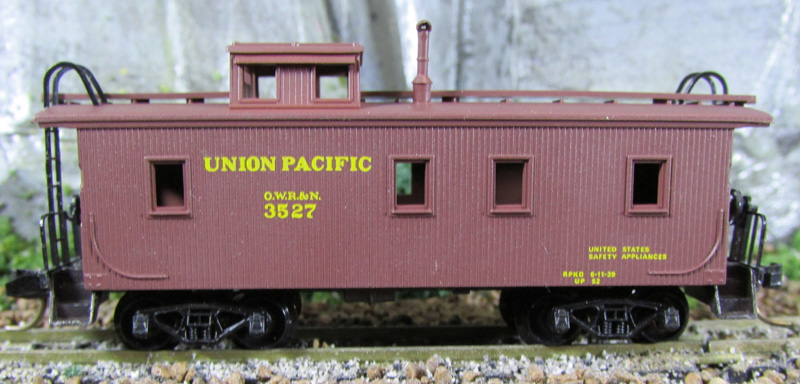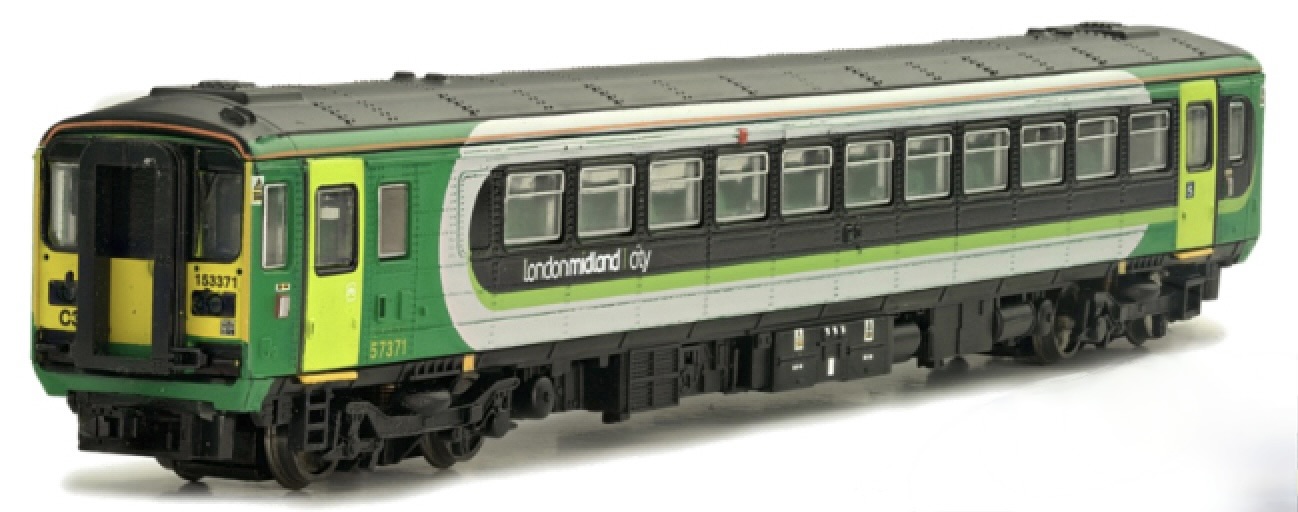Specific Item Information: Kit version. Was also available as Ready-to-Run.
The model was inspired by the boxcars of the 1947 Freedom Train.
The model was inspired by the boxcars of the 1947 Freedom Train.
Model Information: Originally, these models were produced in Japan by Kato for Con-Cor. However, since Con-Cor owned the tooling, they later decided to move the molds to their Chicago factory and later releases of the car were produced in the United States. This tooling may have been eventually moved to China when Con-Cor moved their production to China in the 1990s. ESM has produced this model in assorted paint schemes.
Prototype History: The Association of American Railroads had been establishing design standards for freight cars since the early part of the century. Each new design standard meant higher capacity, lighter, more durable cars. The 1937 standard 40' box car featured an interior height of 10'. Just prior to America's entry into the war, there was a push for an even larger interior height for the AAR standard. The first cars that would eventually be termed 1944 AAR, were actually built in 1941 but the war delayed its declaration as the standard. The new taller cars required a new design of end. Corrugated metal ends had been used since the days when wood side cars dominated for a very good reason, shifting loads would burst through wooden ends during sudden starts and stops! These corrugated panels were stamped in two sections, split horizontally down the middle. The 1937 standard had 5 ribs on one half and 4 ribs on the other -- creating what is called a 5-4 Dreadnaught end. The slightly taller 1944 model required something a little different. The lower panel has 4 ribs while the upper panel has 3 then a space and a final rectangular rib at the top. Called a 4-3-1 (or R-3-4) Improved Dreadnaught end, this design would dominate new box car construction for years.
Road Name History: 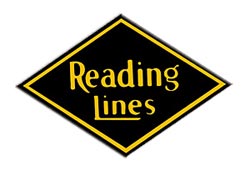 Let’s get a couple of quick clarifications out of the way first. Reading rhymes with bedding and is not “reading” a book. Second, the only “Reading Railroad” is on the Monopoly game board. Its actual name was “Reading Company” with “Reading Lines” used on logos and advertising.
Let’s get a couple of quick clarifications out of the way first. Reading rhymes with bedding and is not “reading” a book. Second, the only “Reading Railroad” is on the Monopoly game board. Its actual name was “Reading Company” with “Reading Lines” used on logos and advertising.
The Reading Company, usually called the Reading Railroad as was enshrined by the Monopoly board game, and boasting a predecessor company officially founded under the name the Philadelphia and Reading Railway Company, operated in southeast Pennsylvania and neighboring states from 1833 through 1976. Until the decline in anthracite loadings in the Coal Region after World War II, it was one of the most prosperous corporations in the United States.
Reduced coal traffic coupled with highway competition and short hauls forced it into bankruptcy in the 1970s. The railroad was merged into Conrail in 1976, but the corporation lasted into 2000, disposing of real estate holdings.

The Reading Company, usually called the Reading Railroad as was enshrined by the Monopoly board game, and boasting a predecessor company officially founded under the name the Philadelphia and Reading Railway Company, operated in southeast Pennsylvania and neighboring states from 1833 through 1976. Until the decline in anthracite loadings in the Coal Region after World War II, it was one of the most prosperous corporations in the United States.
Reduced coal traffic coupled with highway competition and short hauls forced it into bankruptcy in the 1970s. The railroad was merged into Conrail in 1976, but the corporation lasted into 2000, disposing of real estate holdings.
Brand/Importer Information: Con-Cor has been in business since 1962. Many things have changed over time as originally they were a complete manufacturing operation in the USA and at one time had upwards of 45 employees. They not only designed the models,but they also built their own molds, did injection molding, painting, printing and packaging on their models.
Currently, most of their manufacturing has been moved overseas and now they import 90% of their products as totally finished goods, or in finished components. They only do some incidental manufacturing today within the USA.
Important Note: The Con-Cor product numbering can be very confusing. Please see here in the article how to properly enter Con-Cor stock numbers in the TroveStar database.
Currently, most of their manufacturing has been moved overseas and now they import 90% of their products as totally finished goods, or in finished components. They only do some incidental manufacturing today within the USA.
Important Note: The Con-Cor product numbering can be very confusing. Please see here in the article how to properly enter Con-Cor stock numbers in the TroveStar database.
Item created by: bruce.w.tharp on 2018-08-15 16:19:04. Last edited by gdm on 2020-11-24 14:29:11
If you see errors or missing data in this entry, please feel free to log in and edit it. Anyone with a Gmail account can log in instantly.
If you see errors or missing data in this entry, please feel free to log in and edit it. Anyone with a Gmail account can log in instantly.


